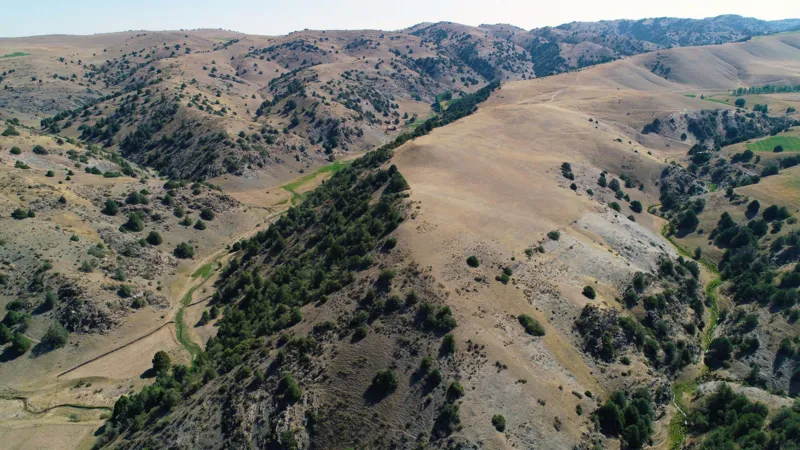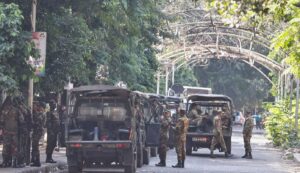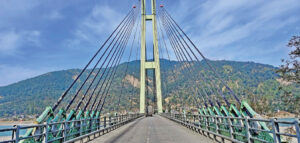
Silk Road cities
Archaeologists have found the remains of two medieval cities in the green mountains of eastern Uzbekistan, a disclosure that may move our understanding of the mythical Silk Road.Lost Silk Road cities discovered in Uzbek mountains.Known for the trade of merchandise and thoughts between the East and West, the exchange courses were long accepted to have connected swamp cities.Lost Silk Road cities discovered in Uzbek mountains.
But utilizing inaccessible detecting innovation, archeologists have presently found at slightest two good country cities that sat along a key crossroad of the exchange routes.Lost Silk Road cities discovered in Uzbek mountains
One of the cities – Tugunbulak, a city crossing at slightest 120 hectares – sat more than 2,000m (6,600 ft) over ocean level, an elevation thought to be unwelcoming indeed today.
The history of Central Asia is presently changing with this finding,” said paleologist Farhod Maksudov, who was portion of the inquire about team.
The group accepts Tugunbulak and the littler city, Tashbulak, were bustling settlements between the 8th and 11th centuries, amid the Center Ages, when the range was controlled by a effective Turkic dynasty.
Only 3% of the world’s populace live over this height nowadays. Lhasa in Tibet and Cusco in Peru are among the uncommon examples.
The disclosure driven by Mr Maksudov, executive of Uzbekistan’s National Center of Paleontology and Michael Frachetti, an prehistorian at Washington College in St Louis, was made conceivable with rambles and a remote-sensing apparatus known as lidar, which employments reflected light to make three-dimensional mappings of the environment.
Their investigate was distributed in the logical diary Nature this week, and specialists who are not included in it have hailed its noteworthiness in shedding light on the ways of life of roaming communities.The group to begin with found Tashbulak, the littler city, in 2011 whereas trekking in the mountains. They found burial destinations, thousands of earthenware shards and other signs that the region was populated.
Historical records imply to cities in the locale, he said, but the group did not anticipate to discover a 12-hectare medieval city a few 2,200m over ocean level.
“We were kind of blown away,” Mr Frachetti told the BBC.
Even trekking up there was harsh, he included, as they experienced solid winds, storms and calculated challenges.
Four a long time afterward, a neighborhood ranger service chairman tipped off the group to ponder another location near to Tashbulak.
“The official said, ‘I think I have a few of those sorts of ceramics in my backyard.’
“So we went to his house… And found his house was built on a medieval citadel. He was like living on a colossal city,” Mr Frachetti said.
The most challenging portion in these revelations was in persuading the scholarly community that these cities existed.
“We would say to individuals that we found this astounding location, and we would get doubt, that possibly it’s nIn 2022, the group returned with a ramble prepared with a lidar sensor, which made a difference peel back the surfaces to reveal dividers, protect towers, perplexing structural highlights and other fortresses in Tugunbulak.
The analysts propose that communities may have chosen to settle in Tugunbulak and Tashbulak to tap solid winds to fuel fires required to noticed press minerals – which the locale was wealthy in. Preparatory unearthings have moreover revealed generation kilns.
“Whoever had press in their hands in medieval time was exceptionally effective,” Mr Maksudov said.
But this might too have driven to the communities’ ruin, he said. This zone utilized to be secured by a thick juniper timberland, but these might have been cut to encourage press generation. “The range got to be ecologically exceptionally unsteady since of the streak surges, since of the torrential slides,” he said.
Typically, researchers have anticipated to discover prove of settlements lower down in the valley, “so these finds are exceptional”, said Diminish Frankopan, a worldwide history teacher at Oxford University.
“What an astounding treasure trove… that appears the profound interconnects criss-crossing Asia, as well as the joins between misuse of common assets more than a thousand years prior,” he said.
High-altitude urban destinations are “exceptionally uncommon” in the archeological record since communities confront interesting challenges in settling there, said Zachary Silvia, an paleontologist at Brown University.
The team’s work gives an “monstrous commitment to the think about of medieval urbanism in Central Asia”, he composed in a commentary on Nature.ot so enormous, or it’s fair a hill, or a castle… That was the enormous challenge, how to archive this city experimentally to really outline what it was,” Mr Frachetti said.In 2022, the group returned with a ramble prepared with a lidar sensor, which made a difference peel back the surfaces to divulge dividers, protect towers, perplexing structural highlights and other fortresses in Tugunbulak.
The analysts propose that communities may have chosen to settle in Tugunbulak and Tashbulak to tap solid winds to fuel fires required to noticed press minerals – which the locale was wealthy in. Preparatory unearthings have moreover revealed generation kilns.
“Whoever had press in their hands in medieval time was exceptionally capable,” Mr Maksudov said.
But this seem moreover have driven to the communities’ destruction, he said. This region utilized to be secured by a thick juniper timberland, but these may have been cut to encourage press generation. “The zone got to be naturally exceptionally unsteady since of the streak surges, since of the torrential slides,” he said.
Typically, researchers have anticipated to discover prove of settlements lower down in the valley, “so these finds are momentous”, said Diminish Frankopan, a worldwide history teacher at Oxford University.
“What an astounding treasure trove… that appears the profound interconnects criss-crossing Asia, as well as the joins between abuse of characteristic assets more than a thousand years prior,” he said.
High-altitude urban destinations are “exceptionally uncommon” in the archeological record since communities confront interesting challenges in settling there, said Zachary Silvia, an paleontologist at Brown University.
The team’s work gives an “gigantic commitment to the ponder of medieval urbanism in Central Asia”, he composed in a commentary on Nature.
Read Related,





